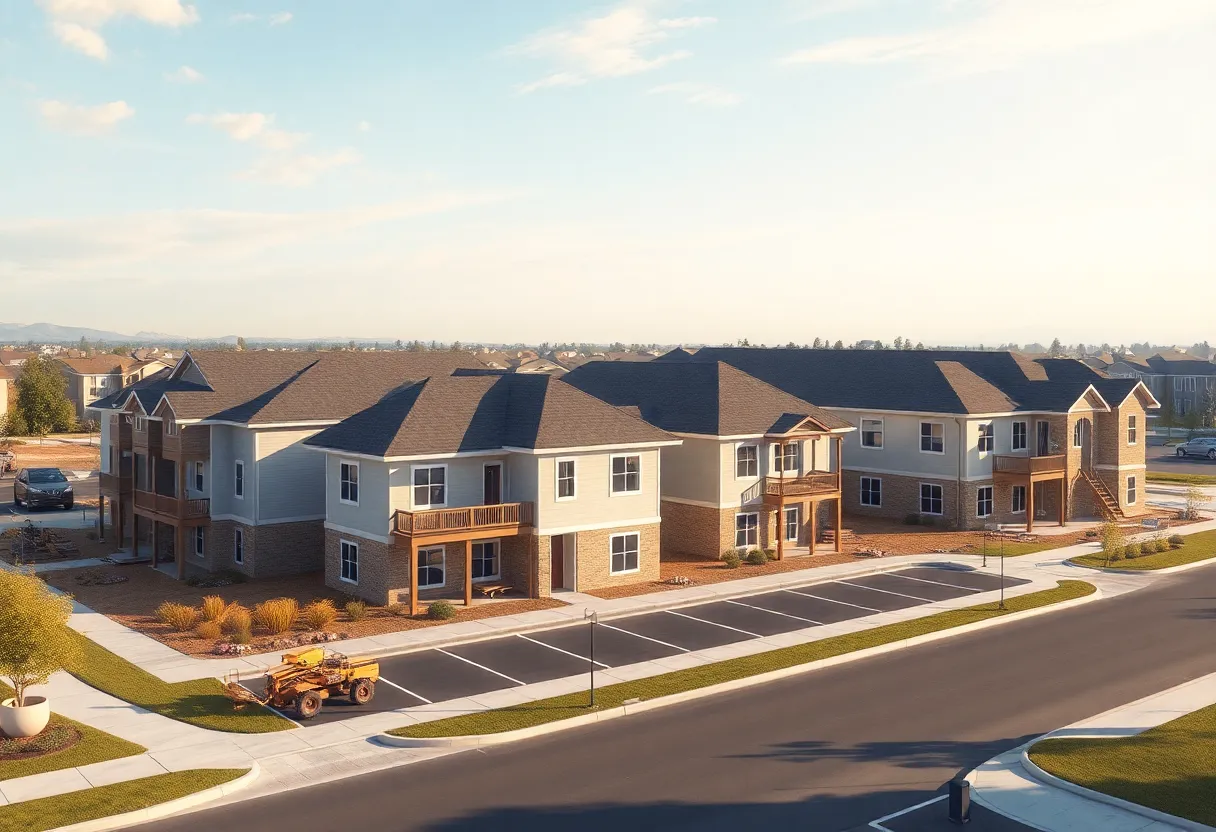construction jobsite, August 29, 2025
News Summary
FieldAI closed an oversubscribed funding round after quick customer adoption, attracting major venture and strategic corporate backers. The capital will accelerate global expansion, fuel product development across locomotion and manipulation, and support aggressive hiring aimed at doubling headcount. Central to FieldAI’s offering are physics-first Field Foundation Models (FFMs) built for embodied intelligence, emphasizing risk-aware behavior, real-world sensing, and BIM generation from jobsite data. Industry pilots validated on-site use, and the raise reflects growing investor interest in construction robotics even as real-world deployments remain mixed. Near-term milestones include scaling hires, new locomotion and manipulation demos, and broader contractor adoption.
FieldAI raises an oversubscribed round to scale Field Foundation Models for embodied‑AI robotics in construction
The company behind Field Foundation Models reported an oversubscribed funding round that will accelerate global growth, deepen product work across locomotion and manipulation, and enable a major hiring push that aims to double FieldAI’s team by year end. Backers highlighted in the round include prominent technology and investment names, signaling strong interest in applying physics‑first embodied intelligence to real jobsites. The funding comes as FieldAI positions its platform to handle the uncertainty, risk, and physical constraints that define construction work.
Funding details and use of proceeds
FieldAI’s oversubscribed round implies commitments exceeded the plan, according to the company’s release. The round is described as backed by high‑profile investors, with the company noting support from Bill Gates, NVIDIA, and other major stakeholders. The funds will be deployed to push global expansion, accelerate ongoing product development across locomotion and manipulation, and enable rapid hiring to scale the organization. In line with the plan, FieldAI expects to nearly double its headcount by the end of the year, reinforcing ambitions to broaden its engineering and field teams.
Technology and claims: what FieldAI is building
At the core of FieldAI’s offering are its Field Foundation Models (FFMs), described as physics‑first platforms focused on embodied intelligence. The company emphasizes that its FFMs are designed to contend with real‑world uncertainty and the constraints of actual work sites, rather than retrofit existing large language or vision models for robotics. FieldAI frames its approach as intrinsically risk‑aware architectures built from the ground up, with a focus on capturing real‑time site data to generate accurate building information models (BIMs). The founder and CEO, Ali Agha, has described the philosophy as avoiding the alignment issues common to adapting general AI models for robotics and instead crafting architectures tailored to physical tasks.
Industry context: where construction robotics stand today
The funding environment around construction technology shows sustained interest in robotics and AI, even as deployments on jobsites remain uneven. A Chicago‑based venture firm reported that roughly 55% of the roughly $3.55 billion invested in construction technology in Q1 2025 went toward next‑generation robotics and AI‑enabled tools. Industry observers have debated when humanoid or highly capable robots will join crews on sites, while investor attention and dedicated robotics programs in construction have grown. Another thread in the data landscape shows that organizations evaluating new robotics gear have expressed enthusiasm, even as the actual use of robotics among contractors has fluctuated. A Known research platform tracking equipment and robotics noted that positive evaluations of new equipment rose markedly, while the share of firms reporting active robotics use declined in the same period.
Broader robotics funding in construction and adjacent fields
Context from other robotics players helps illustrate the funding climate. In related moves, one Redwood City–based robotics company secured a substantial funding round led by major investors to advance its dexterous, dual‑arm loading and unloading systems designed for warehouses and loading docks. That round highlighted the role of big strategic investors in moving robotics platforms toward broader deployment in logistics. Other robotics firms in the space have seen large rounds as well, with partnerships and deployments across hospitality, healthcare, and retail sectors. In these cases, investors have tended to emphasize platforms that combine sensing, motion planning, and learning to handle a wide variety of objects and tasks on real sites.
Participation by DPR Construction and its venture arm
The DPR Construction ecosystem figures into FieldAI’s story through its venture arm and its own site tests. WND Ventures, the venture capital arm of DPR Construction, is described in industry materials as a potential partner in testing and proving FieldAI’s concepts, though it is not listed as an investor in FieldAI. DPR notes that AI and robotics investments can signal broader momentum for funding rounds in construction robotics, particularly as robots move from single‑task roles to more dynamic, multi‑task work on sites. In communication with the press, DPR personnel indicated that ongoing investor support for robotics in construction is likely to grow as projects demand higher efficiency and reliability from automated systems.
Other players shaping the robotics funding landscape
Beyond FieldAI, the broader field includes notable activity around companies that design and deploy robotic systems for logistics and warehousing. Some firms reported large rounds led by major investors, with several deployments in national and international facilities aimed at improving throughput and reducing repetitive labor. The landscape also features multiple platforms that seek to combine advanced perception, dexterity, and planning to enable automated handling of diverse items. Analysts point to a trend toward integrated full‑stack solutions that can manage both the physical manipulation of objects and the planning required to optimize workflows on complex sites and facilities.
What this means for construction technology adoption
The oversubscribed FieldAI round, paired with expectations for rapid hiring and global expansion, underscores continued interest in robots that can operate reliably in real‑world job sites. As projects demand greater automation to address labor constraints and safety concerns, companies that can demonstrate robust, risk‑aware approaches to embodied AI stand to influence the pace at which robotics are adopted on construction sites. While the market has seen mixed deployments, the push from investors and corporate backers signals a readiness to fund more ambitious systems that can learn from real site data and improve over time. The industry is watching to see how well FFMs translate into practical, scalable tools that can generate accurate BIMs and help crews coordinate work more effectively on diverse job sites.
Looking ahead
FieldAI plans to use the new funding to strengthen its global footprint, continue product development around mobility and manipulation, and advance its team through strategic hiring. The company’s stated goal to double headcount by year’s end reflects a broader push in the sector to build talent capable of delivering next‑generation robotics software and hardware for construction. If successful, these moves could contribute to a more dynamic and capable set of robotic solutions that align with the industry’s evolving needs for safety, productivity, and consistency on jobsites.
Table: Key features of this post
| Feature | Description |
|---|---|
| Oversubscribed round | Funding commitments exceeded planned amounts, signaling strong investor interest. |
| Field Foundation Models | FFMs designed for embodied intelligence with a physics‑first approach to robotics on real sites. |
| Use of funds | Global growth, continued product development in locomotion and manipulation, and hiring to scale the team. |
| Headcount plan | Target to double the company’s workforce by year end. |
| Industry context | Robotics and AI funding share in construction tech remains strong, with mixed deployment outcomes on jobsites. |
| Related players | Context from other robotics firms shows a broader ecosystem of investments toward automated handling and logistics on sites. |
FAQ
What is FieldAI’s latest funding round?
The company announced an oversubscribed round intended to accelerate growth and product development, backed by a group of investors described as high‑profile in technology and investment circles.
What are Field Foundation Models?
FFMs are FieldAI’s core platform, designed for embodied intelligence in robotics with a physics‑first approach, focusing on real‑world data and risk awareness rather than adapting generic AI models.
How will the funds be used?
Funds will support global expansion, ongoing development across locomotion and manipulation capabilities, and hiring to scale the organization.
What is the role of DPR Construction and WND Ventures?
WND Ventures is the venture arm of DPR Construction and has involvement in testing FieldAI concepts; DPR’s network is contributing context to the industry’s robotics funding climate, though DPR is not listed as an investor in FieldAI.
What is the industry context for robotics in construction?
Investments in construction tech have increasingly targeted robotics and AI, with a significant share of recent funding going toward next‑generation robotics; deployments remain mixed, with ongoing evaluation and adoption dynamics on jobsites.
Who are other notable players in construction robotics funding?
Other robotics firms operating in related spaces have raised substantial rounds, with deployments across warehouses and logistics, illustrating a broader market trend toward automated handling and embodied AI systems.
Deeper Dive: News & Info About This Topic
Additional Resources
- MV-Voice: Talking, Teaching and Even Recognizing Dogs — Meet Redwood Shores’ Lifelike Robots
- Wikipedia: Social robot
- The Robot Report: Dexterity picks up $95M funding — container-unloading robots
- Google Search: Dexterity robots 95M funding
- New York Times: Humanoid robots (2025)
- Google Scholar: humanoid robots 2025
- Bloomberg: Dexterity lands $1.65 billion valuation
- Encyclopedia Britannica: robotics
- BusinessWire: Bear Robotics Lands $60 Million in Series C from LG Electronics
- Google News: Bear Robotics LG $60 Million





